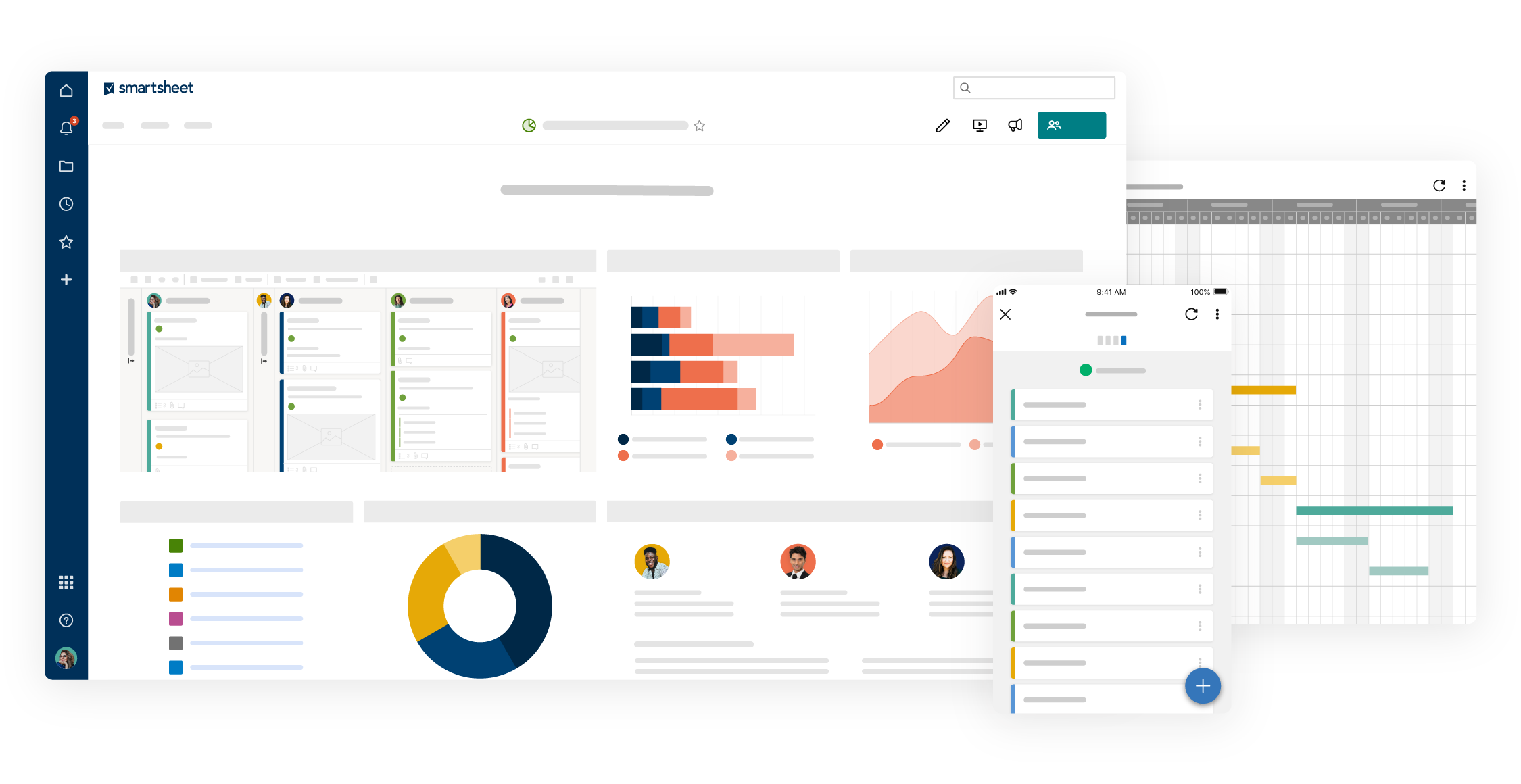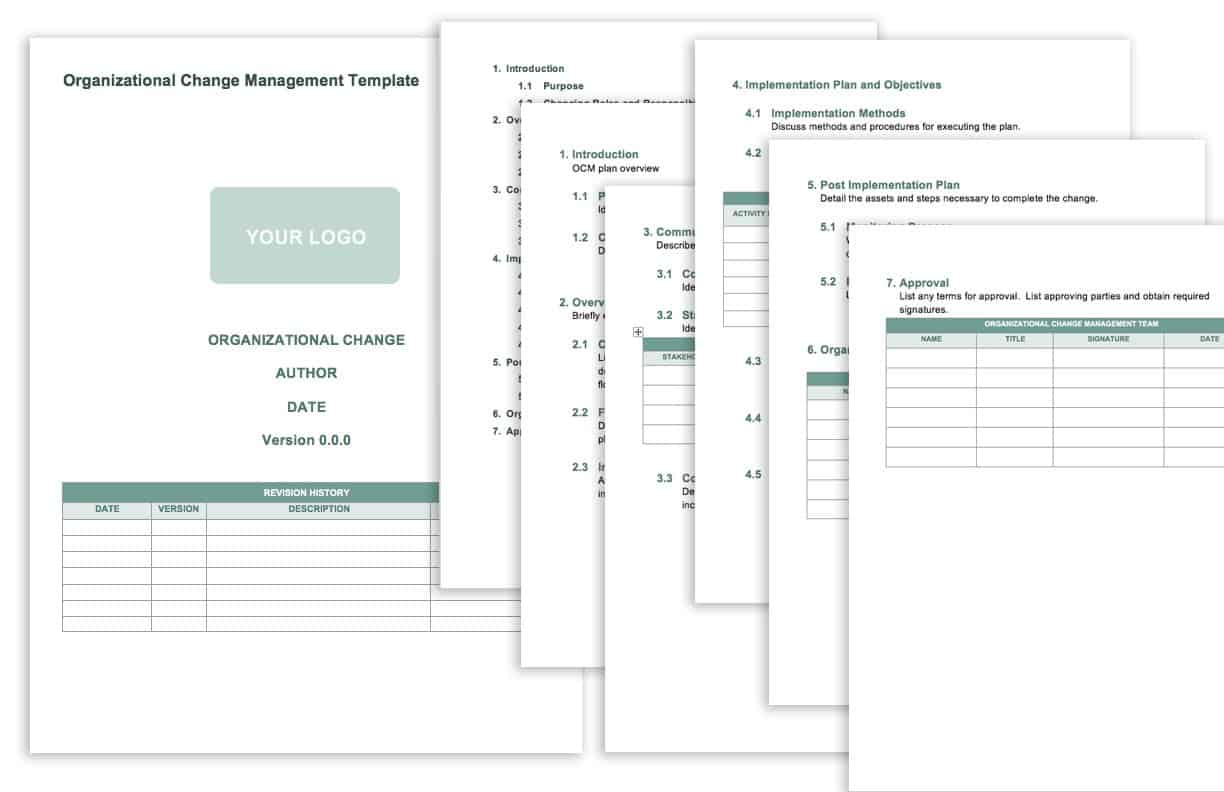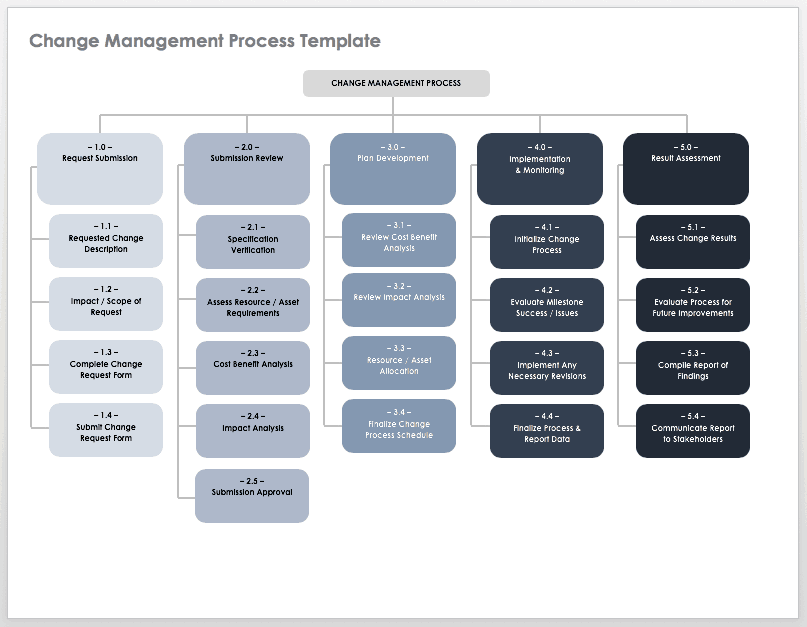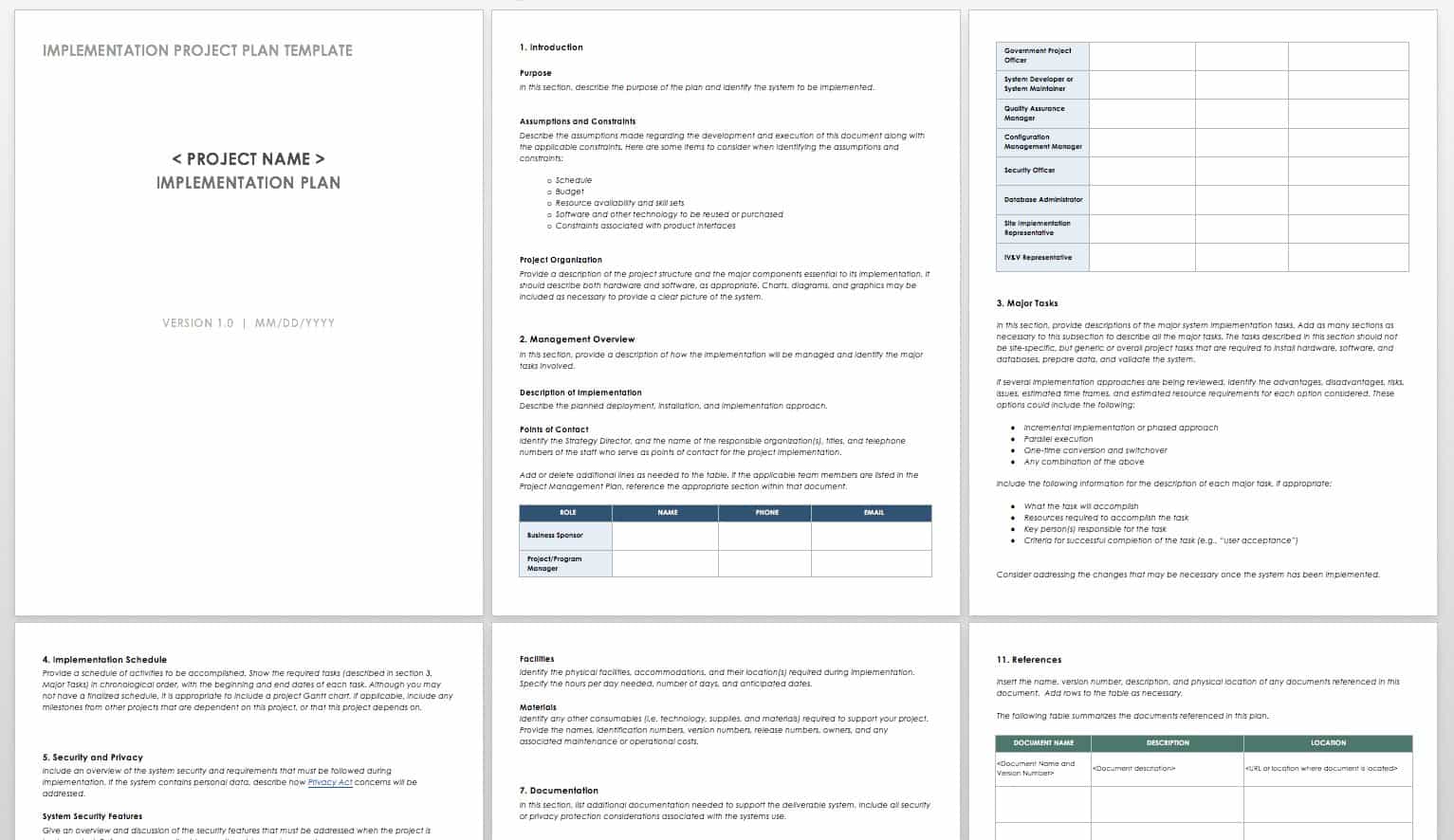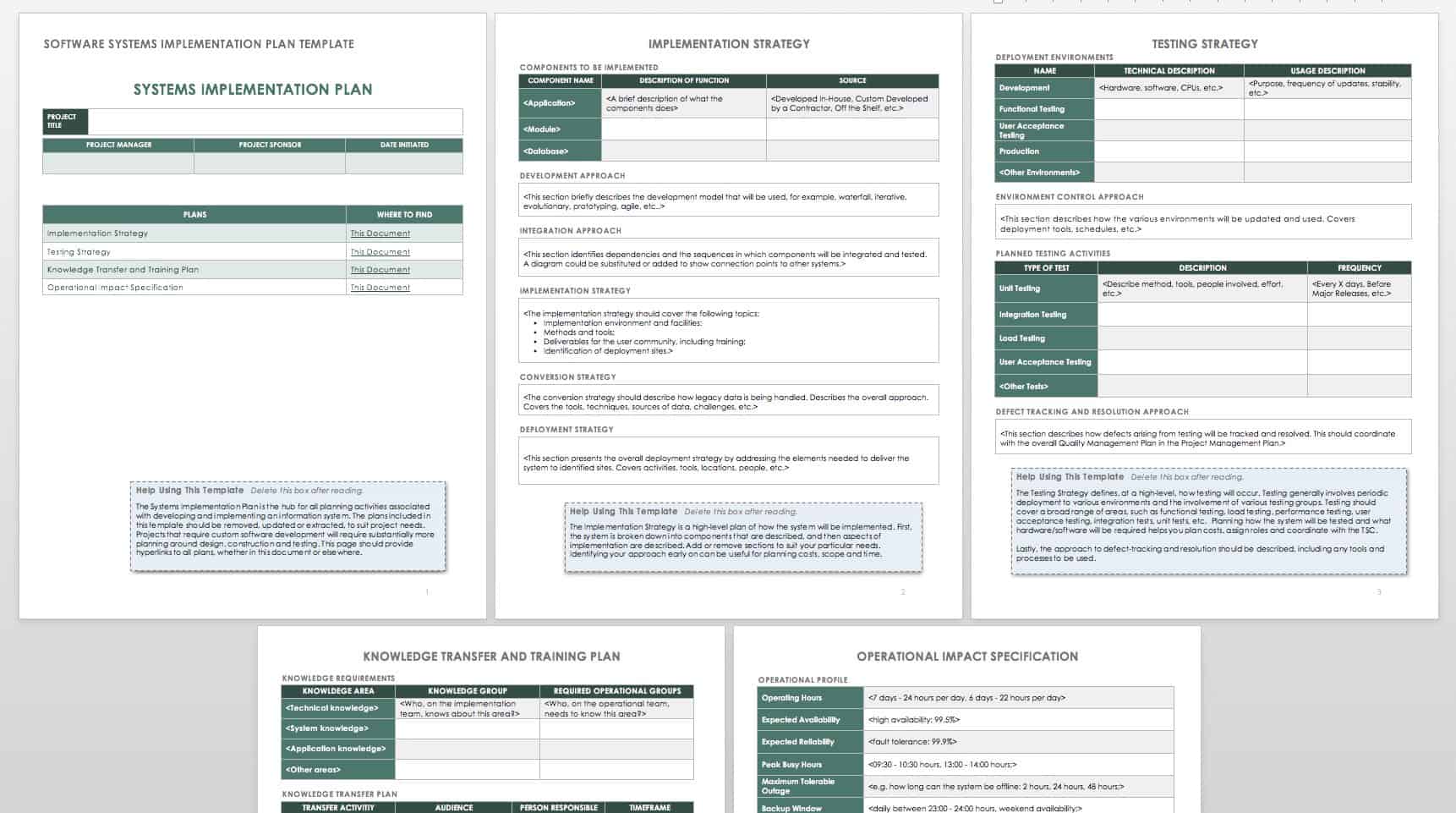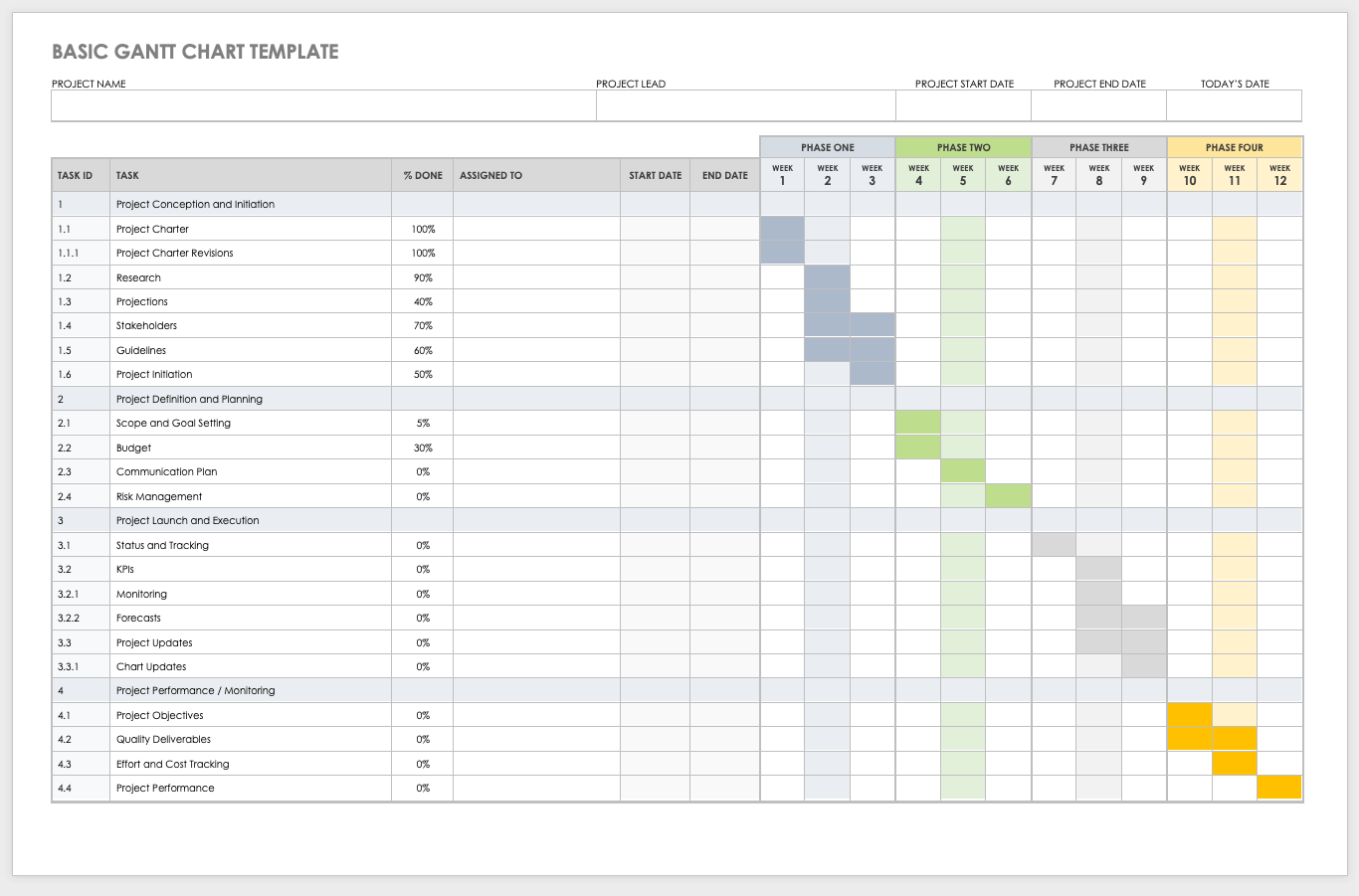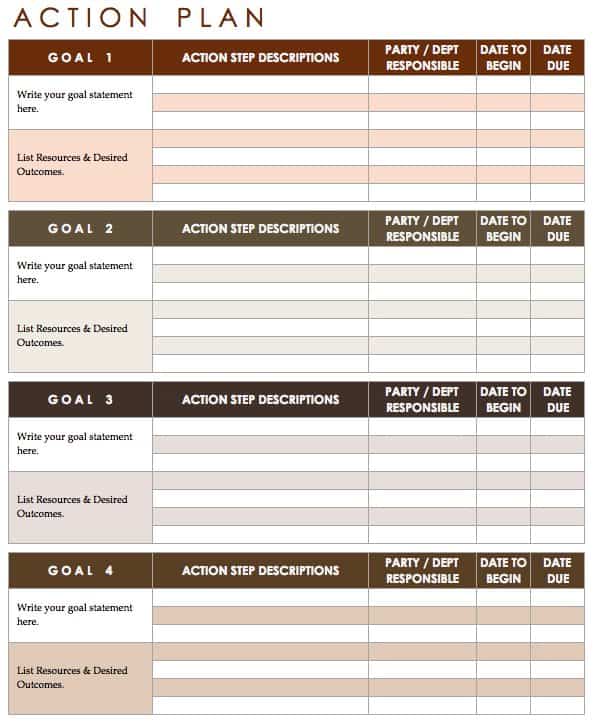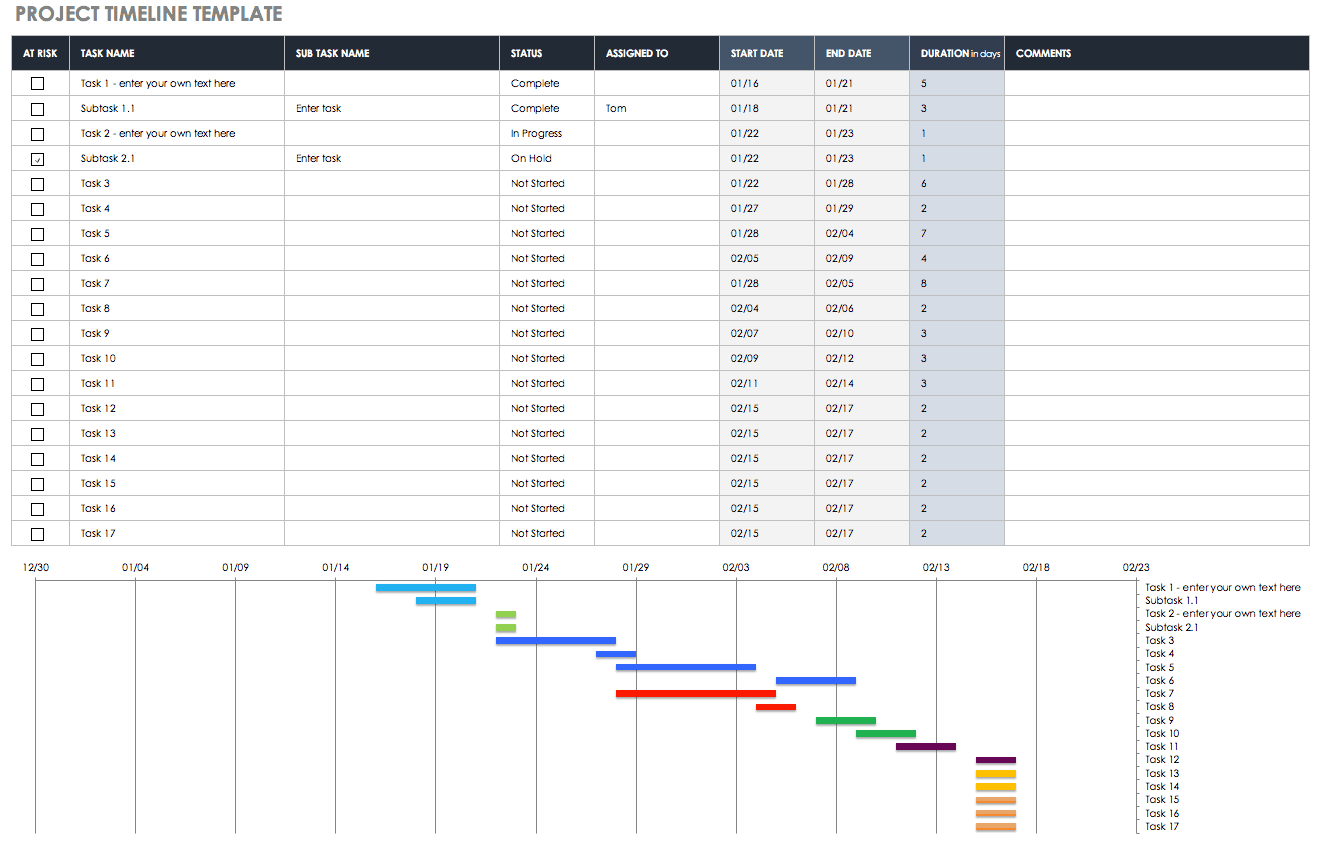What Is an Implementation Strategy?
An implementation strategy is based on a strategic plan, which defines the strategy used to accomplish certain goals or make decisions. Organizations can make strategic plans to guide organizational direction, a particular department’s efforts, or any project or initiative.
Implementation strategy is the process of defining how to bring the strategic plan to life. To execute the objectives outlined in the strategic plan, you must define how you will implement each aspect, from funding and personnel to organization and deliverables. Therefore, without an implementation strategy, it can be difficult to identify how you will achieve each of your stated goals and objectives.
See how Smartsheet can help you be more effective
Watch the demo to see how you can more effectively manage your team, projects, and processes with real-time work management in Smartsheet.
What Is the Strategic Implementation Process?
The strategic implementation process refers to the concrete steps that you take to turn your strategic plan into action. The implementation tactics you use and steps you take will depend on the specific undertaking, organization, and goals.
A strategic implementation plan (SIP) is the document that you use to define your implementation strategy. Typically, it outlines the resources, assumptions, short- and long-term outcomes, roles and responsibilities, and budget. (Later on, we’ll show you how to create one.) An SIP is often integrated with an execution plan, but the two are distinct.
The SIP outlines the activities and decisions necessary to turn the strategic goals into reality, and the execution plan is a schedule of concrete actions and activities to achieve goals and drive success. You can consider your strategy “implemented” once you determine that you have the requisite resources to meet your strategic needs, but you haven’t “executed” until you’ve actually taken action and achieved objectives. You can read more about the differences between strategy, implementation, and execution in this article by the Harvard Business Review.
The strategic implementation process is often compared to the following activities:
- Organizational Planning: Also called organizational design or organizational structure, this is the high-level process of identifying an organization’s general operational goals and then building specific strategies to meet them. While strategic planning centers on evaluating an existing organization’s strengths and weaknesses and identifying specific goals for improvement, organizational planning is more concerned with how specific tasks, processes, and decisions will flow within the organization.
Like implementation planning, organizational planning also requires you to create a plan of action. You can use a template to ease the process of writing this complicated plan. Throughout this article, you’ll find other free, downloadable templates for a variety of different planning activities.
Download Organizational Change Management Plan
- Strategic Management Process: This is the ongoing effort to manage an organization, including both the decisions and actions that flow from the organizational strategy. Continuous strategic management can inform organizational planning by providing a strategy that outlines the organization’s goals.
- Change Management: Change management is how you prepare and manage organizational planning, from the high-level processes and culture down to individual roles. Effective change management involves strategy and careful monitoring so that you can plan for change rather than react to it.
Download Change Management Process Template
- Differentiated Planning: This is a reordering method that you can use to identify which resources you need based on the frequency with which you typically use them. Separate the items on your reorder list into three categories: routine, regular, and rare. This will give you a rough idea of the different demand levels for each resource, so you don’t have to spend time considering whether or not to restock. Because identifying and accumulating resources is an important component of implementation planning, it’s useful to understand differentiated planning.
Why Implementation Is Important
Implementation planning largely determines project success because without it, your strategic goals remain unactionable. Therefore, implementation is the necessary step that transforms your strategic plans into action to achieve your goals.
There are many examples where implementation planning heightens project success. In fact, the Harvard Business Review reported that companies with an implementation and execution plan saw 70 percent greater returns.
McKenzie says that implementation planning is critical to project success. “This is the stage which allows the planned strategy to be executed,” he says. “The primary benefits to implementation and implementation planning are the abilities to outline the tasks needed to complete the project, identify the personnel and resources needed, and document the timeline for project completion to ensure you’re meeting the strategic goals.”
Hancock agrees. “If you don’t implement your plan — you don’t get anything done,” she says. “So, implementation is crucial. [Even] if you have the best plan in the world, it’s totally irrelevant if you don’t put the plan into action,” she adds.
The practice of implementation planning is also important in some of today’s organizational shifts. Most notably, implementation plays a part in the current shift from reactionary to strategic companies — in other words, organizations that plan for change and adaptation rather than react to it. Additionally, implementation supports the movement toward employee-oriented organizations, which it does by valuing communication, encouraging mutually-supported goals, and emphasizing accountability. Implementation planning is necessarily a human (and team) endeavor and making it a part of your daily processes helps ensure collaboration, trust, and transparency among project team members all the way up to C-suite management.
What Is the Implementation Plan of a Project?
Implementation plans are commonly used for discrete projects, technology deployment within a company, and inventory planning. You can also create an implementation plan for personal use if it will help you organize and take actionable steps toward your goal(s).
A project implementation plan is the plan that you create to successfully move your project plan into action. This document identifies your goals and objectives (both short and long-term), lists the project tasks, defines roles and responsibilities, outlines the budget and necessary resources, and lists any assumptions. A project implementation plan sometimes includes a rough schedule, but teams usually set the hard timeline in the execution plan.
In the following sections, we’ll delve deeper into each component of an implementation plan and show you how to write your own.
Components of an Implementation Plan
The following are the key components of and questions that drive a successful implementation plan:
- Define Goals/Objectives: What do you want to accomplish? The scope of these goals will depend on the size of your undertaking.
- Schedule Milestones: While task deadlines and project timelines will be formally set in the execution plan, it’s a good idea to outline your schedule in the implementation phase.
- Allocate Resources: One of the core purposes of an implementation plan is to ensure that you have adequate resources (time, money, and personnel) to successfully execute. So, gather all the data and information you need to determine whether or not you have sufficient resources, and decide how you will procure what’s missing.
- Designate Team Member Responsibilities: Assign roles. This doesn’t necessarily mean you must define who will execute each individual task, but you should create a general team plan with overall roles that each team member will play.
- Define Metrics for Success: How will you determine whether or not you are successful? What data (whether quantitative or qualitative) will you use to measure your results, and how will you accrue the necessary data?
- Define How You Will Adapt: Make a plan for how you will adapt, if necessary, to changes in your plan. Be sure to consider factors outside your control that could significantly alter the schedule or success of your project, and create emergent strategies ahead of time, so you don’t get derailed down the road — doing so helps build a culture of flexibility, agility, and fast action.
- Evaluate Success: In addition to defining your metrics for success, decide how often you will evaluate your progress (e.g., quarterly reviews).
In the following section, we’ll break down each element of a successful implementation plan to show you how to write one yourself.
How to Write an Implementation Plan
Implementation plans are split into sections. Each section should be detailed, combining the information from your strategic plan and incorporating the necessary research and data to make your objectives actionable. Here’s how to write each component in an implementation plan:
- Introduction: The introduction of your implementation plan explains the purpose, vision, and mission statement of your project or initiative. You should identify the high-level risk areas, include any assumptions, and describe how you will identify the value stream in your proposed work.
- Management Overview: In this section, you describe how implementation will be managed. This includes who is managing it, the underlying roles and responsibilities, and key points of contact. You should identify the strategy director, who is the person that develops and steers the strategy (this may or not be the same person who is leading implementation).
- Major Tasks: This is where you list and describe the specific tasks, actions, and targets in implementation. You should also note the status of any tasks that are already in progress.
- Implementation Schedule: You do not need to create a detailed, inflexible task schedule in your implementation plan — we’ll talk later on about how to create a schedule in the execution plan. At this stage, it’s appropriate to simply list the task order and predicted phase durations to roughly outline and allot for all the many moving pieces.
- Security and Privacy: Discuss the privacy features and considerations of the software tools, processes, or information that you may use in implementation. Address security issues and how to handle sensitive information (personal data, medical history, financials, etc.).
- Implementation Support/Resources List: Describe the various tools, activities, and departments that you require to support successful implementation. These might include hardware or software tools, facilities, and additional external human resources or services.
- Documentation: In this section, you must attach any other documentation that supports your implementation plan. This could include your strategic plan, confirmation of adequate materials and resources, and a history of past successful projects.
- Monitoring Performance: Define the metrics by which you will measure success. How and when will you review your progress?
- Acceptance Criteria: How will you define implementation “completion?” This differs from performance monitoring because rather than defining metrics for milestones and appropriate implementation, here, you describe how you will know when you have buy-in from management on your implementation plan.
- Glossary: Define any key terms used in your implementation plan.
- References: Indicate where you received your information, or list people who support your plan.
- Project Approval: If you need management’s approval before moving into execution, this section provides space for official signoff.
To make it easy, you can also use a template to write your implementation plan. This will ensure that you don’t overlook any steps or sections and also provide a professional layout that you can use to deliver to management, clients, or other stakeholders. Download the template for free, and edit the fields to fit the needs of your specific project — for example, for enterprise resource planning (ERP).
Download Project Implementation Plan Template - Word
Software deployment is another common category of initiative that merits an implementation plan. Use the following template to create a software and systems implementation plan.
Download Software Systems Implementation Plan Template - Word
Implementation Planning Best Practices
Although you should include all the detailed aspects listed above in your implementation plan, simply having all these components will not ensure success. Instead, you should focus on the process of implementation and foster the following behaviors within your team:
- Create a Designated Implementation Team: An implementation team is the team responsible for ensuring successful implementation of a particular initiative. While it’s possible to move through implementation without creating a specific, organized body to oversee the processes, doing so heightens your chances of success.
- Create a Shared Vision among All Team Members: Establish “why” you are making strategic changes so that team members have both a greater understanding of the root cause and a deeper connection to their work. Ensure individual compliance, so people don’t feel like their voices went unheard. Adler emphasizes, “Involve the people who will actually be implementing the change during the planning phase. Ideally, the idea will even come from them. This inclusion greatly increases the buy-in and commitment that the team has to actually getting the project implemented.”
- Choose a Strong Team Leader: The team leader should coach and educate team members along the way and seek out guidance from past implementation plan leaders to improve upon existing implementation processes within the organization. Adler explains that there can be multiple team leaders with slightly different responsibilities: “Each initiative needs a team. The team includes a ’champion,’ someone who is ultimately responsible for getting the thing done. They should also have a ’management sponsor,’ someone that can help the team get through any blocks they might have,” she says.
- Define Actionable Goals: Stay specific, define current issues, and identify root causes. Methods for defining current problems include brainstorming, surveys, and new member information forms. You can also use the note card method: Ask each team member to answer three questions anonymously (What is the single biggest issue facing our team?, What will be the most important issue in five years?, What is the best way for our team to be involved in these issues?), separate the cards into piles with similar answers, and count which answers are the most common within the group. Use the highest ranking similar answers to stimulate discussion of how to proceed.
- Create an Action-Oriented Plan: Regardless of the size or predicted duration of your goals, create a plan focused on incremental action (rather than on continual planning). Small steps add up, so stay positive and focus on the future. That said, Hancock reiterates that your plan must be realistic: “Make sure your plan is reality-based,” she says. “You need to know what problem you really should be solving so that you don’t end up solving proxy problems (problems you think are your problem but really aren’t — an example of this is praying for rain when your real problem is that you need water on your field). You need to know what is really going to impact your problem so that you don’t pray for rain, which doesn’t affect anything. And, finally, you need to know what you really need to do to get the work done. What resources do you need? Do you have the resources you need? Can you get the resources you need? If not, your plan won’t work” she continues.
- Value Communication: The team leader should not only value others’ input, but also make active participation an expectation. Open, honest communication keeps processes transparent and helps generate new ideas.
- Continually Monitor Incremental Success: Perform analysis and hold regular progress meetings to analyze your development. Closely monitoring your progress enables you to make adjustments before crisis hits and allows you to adapt before processes or expectations become solidified. Additionally, treating incremental milestones as successes helps foster a culture where employees feel valued for their contributions. Adler explains, “Building a culture where employees expect that projects will be successfully implemented is important. Celebrate successes and reference previous projects frequently.”
- Involve the Correct People at the Correct Times: This includes defining when and why it is appropriate to involve upper management. As McKenzie says, “Include the critical stakeholders that are part of the project. The beginning of planning should only include the decision makers and not every team member that is part of the project. Outline the critical tasks that are needed first. Once the tasks are outlined, dictate the personnel who will be responsible for the tasks. Once you identify the personnel, then bring in the additional resources to find what other tasks are needed to complete the larger tasks. To draft a proper implementation plan, it is imperative to include the critical stakeholders to outline the initiative.”
- Publicize Your Plan: While you don’t necessarily want every stakeholder’s input at all times during implementation planning, you do want to maintain transparency with other teams and management. Make your plan available to higher-ups to keep your team accountable down the line.
Difficulties in Implementation Planning
While implementation planning is critical to successful execution, there are several hurdles:
- Unless you are disciplined about moving into the execution phase, you can get stuck in planning and never get your project off the ground.
- In any project, you may struggle to gain buy-in from key stakeholders.
- It can also be difficult to break down every goal into an actionable step. If you keep your goals tangible, you can more easily identify targeted actions that will move you toward them.
- No matter how well you plan, all projects have a high propensity for failure. Don’t get discouraged, though — dedicated, strategic implementation planning will raise the likelihood of project success.
Although the above hurdles can be time-consuming and tedious, they are investments that will help you create a culture of trust. Because implementation is an ongoing team effort, you can’t afford to lack buy-in and commitment from any member of your team or direct stakeholders. So, communicate often and honestly, and prioritize teamwork when implementing your strategic plan.
Still, even though inclusion and teamwork are key to a successful strategy, McKenzie reiterates that implementation planning won’t work if too many people are involved. “Implementation planning often gets derailed due to the input from various people that are not involved in the project,” he says. “There needs to be a clear line between the implementation team who is responsible for the execution and final project completion and the customers, internal or external, who are the recipients of the project. The customers can outline their requirements, but the implementation, tasks, and deliverables should be guided by the implementation team,” he concludes.
Adler explains that another common mistake is taking on too much at once. “It takes a lot of work to get something significantly new implemented,” she notes. “For this reason, the fewer initiatives the business takes on simultaneously, the greater the chances of success. Each initiative will take its team members away from their 'normal' work to some degree, and the business needs to be able to support this. If there are six things the business wants to implement, it is better to take on one or two at a time than to try to tackle all six at once,” she points out.
Tools for Successful Implementation Planning
While the implementation plan itself is a relatively low-tech document, software tools can help you track and manage your progress. From Gantt charts to advancements in information and communication technology, you’ll find popular implementation planning tools and their benefits below.
A Gantt chart is a graphical bar chart that you can use as a project timeline, and many software programs exist that allow you to create these online charts. As you move from implementation to execution, a Gantt chart can help you track individual task progress, see relationships among tasks, and identify critical or at-risk tasks.
Download Basic Gantt with Dependencies Template
You can use a PERT (program evaluation and review technique) chart to forecast project duration by creating a timeline for individual tasks and identifying dependent tasks. PERT requires you to forecast three separate timetables — the shortest possible, the most likely, and the longest possible — which forces you to stay flexible in your planning, so you can adapt your schedule as factors inevitably change over the course of a project.
When you have successfully implemented your plan, you’re ready to move to project execution. Execution planning and monitoring is outside the scope of this article, but below you’ll find more helpful templates to move your project toward successful completion.
Download General Action Plan Template
Download Project Timeline Template
Download Project Charter Template
Excel | Word | Smartsheet
Advancements in information and communication technology (ICT) have led to the development of cloud-based software that allows for anytime, anywhere access and multiple users. This technological capability is especially helpful for group work, in which multiple team members need to access a certain file simultaneously while also avoiding version control issues. For example, organizations commonly use cloud-based software to create a project management system or performance management system.
Using software to manage your implementation plan can provide the following benefits:
- Drive Accountability: By creating a single record of project progress, you build transparency (both in team members and processes) and reliability.
- Keep Everyone up to Date: All users can access the most current information, which, in turn, cuts out unnecessary communication or erroneous double-work.
- Improve Flexibility: Project management software can help you identify bottlenecks and potential problems early on, so you are able to adapt in anticipation. If you are attempting Agile project management, flexibility is crucial.
- Support Organizational Commitment: Using a software tool often provides the transparency necessary to get executives to support your project. Once they have visibility into processes and progress, they will be more likely to grant the buy-in you need to procure resources and succeed.
When deciding which tool to use, consider the following:
- Buying Tools vs. Developing Software Internally: This will depend on the capabilities and availability of your in-house developers as well as on your budget. Additionally, consider whether or not you have the bandwidth to engage with a vendor and maintain the relationship over time.
- Open Source vs. Free vs. Subscription: Open source software provides a great opportunity for organizations with limited budgets and development resources to build on top of the existing open platforms. There are also many free programs available (not open source). However, be wary that free options may have limited functionality. For organizations with larger budgets and a greater need for powerful functionality, most paid platforms bill on a subscription basis.
- Usability Requirements: Consider your team’s skill level. While you might be drawn to a tool with fancy functionality, it will be pointless (and perhaps even detract from project success) if it is too difficult for your team to use or learn.
Ultimately, software tools are a fantastic way not only to elevate the accuracy of tracking project metrics and progress, but also to save time, build flexibility, and stimulate communication among your team.
Improve Implementation Efforts with Smartsheet
Empower your people to go above and beyond with a flexible platform designed to match the needs of your team — and adapt as those needs change.
The Smartsheet platform makes it easy to plan, capture, manage, and report on work from anywhere, helping your team be more effective and get more done. Report on key metrics and get real-time visibility into work as it happens with roll-up reports, dashboards, and automated workflows built to keep your team connected and informed.
When teams have clarity into the work getting done, there’s no telling how much more they can accomplish in the same amount of time. Try Smartsheet for free, today.

